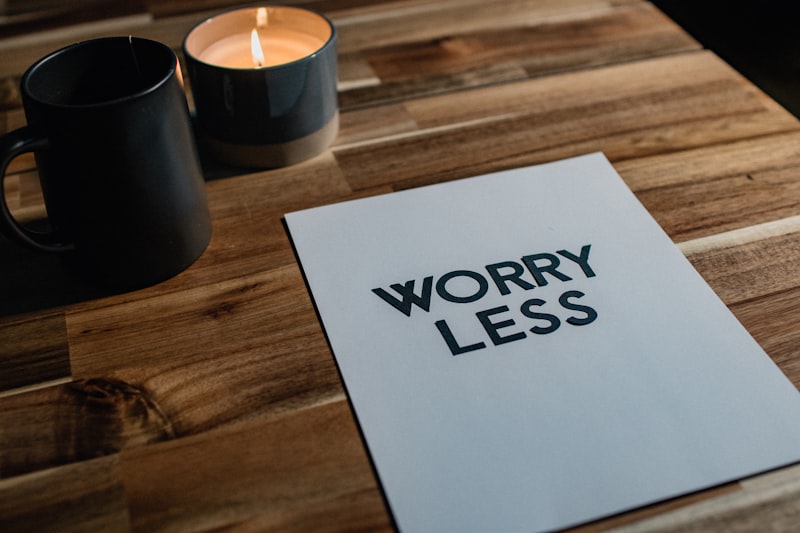Anxiety disorders can cast a shadow over everyday life, affecting how individuals think, feel, and behave. These disorders aren’t just fleeting worries but persistent and often overwhelming feelings of fear and uncertainty. Understanding anxiety disorders begins with recognizing their varied forms and symptoms, which can range from generalized anxiety disorder (GAD) to specific phobias, social anxiety disorder, and panic disorder.
GAD is characterized by excessive worry about everyday concerns such as health, work, or family, often without a clear cause. On the other hand, specific phobias trigger intense fear of particular situations or objects, like heights or spiders, leading to avoidance behaviors that can impact daily routines. Social anxiety disorder involves an intense fear of social situations, where individuals fear embarrassment or scrutiny by others. Panic disorder manifests as sudden and repeated episodes of intense fear, accompanied by physical symptoms like heart palpitations or shortness of breath.
The impact of anxiety disorders extends beyond emotional distress, affecting physical health and overall well-being. Chronic stress from anxiety can lead to headaches, muscle tension, and sleep disturbances, further exacerbating the condition. In severe cases, individuals may withdraw from social interactions or struggle with performance at work or school.

Treatment for anxiety disorders typically involves a combination of medication, therapy, and lifestyle changes. Medications like antidepressants or anti-anxiety drugs can help manage symptoms, while therapy, such as cognitive-behavioral therapy (CBT), equips individuals with coping strategies and tools to challenge anxious thoughts. Lifestyle adjustments, including regular exercise, adequate sleep, and stress management techniques, also play a crucial role in alleviating symptoms and improving overall mental health.

Understanding anxiety disorders empowers individuals to seek timely support and intervention. By recognizing symptoms early and addressing them proactively, individuals can regain control over their lives and reduce the impact of anxiety on their daily functioning.
This article aims to provide a comprehensive yet accessible overview of anxiety disorders, addressing their types, symptoms, impact, and treatment options in a reader-friendly and engaging manner.
Unveiling the Invisible: Inside Anxiety Disorders and Their Impact
Anxiety disorders are often unseen but profoundly impactful conditions that affect millions worldwide. Unlike fleeting worries, these disorders persist, altering how individuals think, feel, and behave. Imagine anxiety as a shadow that dims even the brightest moments, a persistent guest that colors daily life with uncertainty and fear.
What makes anxiety disorders complex is their diverse manifestations. From generalized anxiety disorder (GAD), characterized by excessive worry about everyday matters, to panic disorder, where sudden and intense bouts of fear grip individuals unpredictably. Each disorder paints a unique portrait of psychological distress, shaping personal narratives with its distinct brushstrokes.

The impact of anxiety disorders extends beyond mental anguish. It seeps into physical health, disrupting sleep patterns, appetite, and even immune function. The toll on relationships is palpable, as anxiety can strain connections with loved ones, making the world seem distant and unsafe. Profoundly, anxiety disorders can limit career growth, stifling potential and confidence in professional settings.
Yet, amidst the shadows, there is hope. Awareness and understanding are pivotal in combating anxiety disorders. Recognizing symptoms early empowers individuals to seek support, whether through therapy, medication, or lifestyle changes. Therapy offers a safe space to unravel anxious thoughts, providing tools to navigate turbulent emotions and regain a sense of control.

Moreover, destigmatizing anxiety disorders is crucial. It encourages open conversations, fostering empathy and solidarity within communities. Just as a supportive embrace can dispel the chill of loneliness, compassionate understanding can alleviate the burden of anxiety.
In essence, unveiling the invisible realm of anxiety disorders reveals profound human experiences often overlooked. It beckons us to listen attentively, to offer kindness without judgment, and to illuminate pathways toward healing and resilience.
Decoding Anxiety: From Causes to Coping Strategies
Anxiety can stem from various factors, often rooted in our lifestyles, genetics, or even past experiences. Stressful situations like work deadlines, financial pressures, or personal conflicts can trigger anxiety. Additionally, some individuals may have a genetic predisposition to anxiety disorders, making them more susceptible to its effects. Understanding these causes helps in deciphering the complex nature of anxiety.
When faced with anxiety, it’s essential to employ coping strategies that can help manage and alleviate its symptoms. Simple practices like deep breathing exercises can immediately calm the mind and reduce anxiety levels. Regular physical activity, such as yoga or jogging, releases endorphins that elevate mood and decrease stress. Moreover, maintaining a balanced diet and getting enough sleep are crucial in regulating emotional health and resilience.
Seeking support from friends, family, or a therapist is also invaluable. Talking about your feelings not only provides emotional relief but also offers perspective and reassurance. Cognitive-behavioral techniques taught by therapists can reframe negative thinking patterns, empowering individuals to confront and overcome anxious thoughts.
Understanding the root causes of anxiety and adopting effective coping strategies can significantly improve one’s quality of life. By integrating these practices into daily routines, individuals can gain better control over their anxiety and cultivate a sense of inner peace and resilience.
Navigating Anxiety Disorders: Insights into Symptoms and Treatment Options
Anxiety disorders can be like unexpected storms in the calmest of days, sweeping in with a rush of unease and uncertainty. For those who experience them, understanding the symptoms is crucial. Anxiety manifests differently for each person, often characterized by excessive worry, restlessness, and a sense of impending doom. Physical symptoms like increased heart rate, sweating, and trembling are common companions to these emotional struggles.
Identifying these signs early can pave the way for timely intervention. Cognitive-behavioral therapy (CBT) stands out as a beacon of hope for many. This therapy equips individuals with coping mechanisms to challenge negative thought patterns, offering a toolkit to navigate the turbulent waters of anxiety. It’s like building a sturdy raft to ride out the storm, bolstered by strategies that gradually restore a sense of control and calm.
Medication also plays a pivotal role in managing anxiety disorders, particularly in severe cases where symptoms significantly impair daily functioning. Antidepressants and anti-anxiety medications can rebalance brain chemistry, providing relief from overwhelming feelings and allowing individuals to regain stability.
In addition to these traditional treatments, lifestyle adjustments can act as powerful anchors in the journey towards recovery. Regular exercise, adequate sleep, and mindfulness practices serve as essential tools in the arsenal against anxiety. They nurture a foundation of resilience, strengthening mental and emotional well-being over time.
Navigating anxiety disorders requires a holistic approach, recognizing that every individual’s journey is unique. By combining therapeutic interventions, medication, and lifestyle changes, individuals can cultivate resilience and reclaim a sense of equilibrium. It’s about charting a course through rough seas towards calmer shores, where each step forward marks a triumph over adversity.
Anxiety Unraveled: Exploring Different Types and Their Unique Challenges
Anxiety is a complex emotion that manifests in various forms, each presenting its own set of challenges. From generalized anxiety disorder (GAD) to social anxiety and phobias, understanding these types can shed light on the diverse ways anxiety affects individuals.
Generalized Anxiety Disorder (GAD) is like having a constant companion of worry. It’s not just about feeling stressed occasionally; it’s a persistent feeling that something bad is about to happen, even when everything seems fine. People with GAD may struggle to control their worries, affecting their daily life and relationships.
Social Anxiety Disorder revolves around intense fear of social situations where embarrassment or judgment may occur. It’s more than just shyness; it’s a fear that can be paralyzing, making everyday interactions daunting. Imagine feeling like all eyes are on you, even in the most ordinary situations like speaking up in a meeting or attending a party.
Specific Phobias are irrational fears of specific objects or situations, like heights, spiders, or flying. Unlike normal fears, these phobias can provoke intense anxiety and avoidance behaviors. Just the thought of encountering the feared object or situation can trigger a panic attack, making it challenging to live freely.
Panic Disorder involves unexpected and recurring panic attacks, which are sudden episodes of intense fear accompanied by physical symptoms like a racing heart, sweating, and dizziness. Living with panic disorder means constantly fearing the next attack, often leading to avoidance behaviors and significant lifestyle changes.
Post-Traumatic Stress Disorder (PTSD) develops after experiencing a traumatic event. It involves reliving the trauma through flashbacks or nightmares, avoiding triggers associated with the event, and feeling constantly on edge. PTSD can severely impact daily functioning and relationships, requiring specialized treatment.
Obsessive-Compulsive Disorder (OCD) manifests through unwanted thoughts (obsessions) and repetitive behaviors (compulsions) that the person feels driven to perform. OCD can consume hours each day and significantly interfere with daily life, causing distress and frustration.
Understanding these different types of anxiety is crucial for recognizing the unique challenges each individual faces. Whether it’s the constant worry of GAD, the social fears of social anxiety, or the debilitating panic attacks of panic disorder, each form requires tailored approaches for effective management and support. By unraveling the complexities of anxiety, we can better empathize with those affected and work towards creating a more understanding and supportive environment.
Behind the Mask: The Science of Anxiety Disorders
Have you ever felt your heart racing before a big presentation or found yourself overwhelmed by worry before an important event? These experiences are more than just fleeting moments of stress; they can be manifestations of anxiety disorders, complex conditions that affect millions worldwide.
Anxiety disorders are not just about feeling nervous; they involve persistent and excessive worry that can interfere with daily life. From generalized anxiety disorder (GAD) to panic disorder and phobias, these conditions vary in their triggers and symptoms but share a common thread of intense fear and apprehension.
At the heart of anxiety disorders lies a complex interplay of biological and environmental factors. Imagine your brain as an orchestra where neurotransmitters like serotonin and dopamine play crucial roles in regulating emotions and mood. When this delicate balance is disrupted, it can lead to heightened anxiety levels. It’s like a symphony where each instrument must harmonize perfectly to create beautiful music; any discordance can create a cacophony of anxiety.
Moreover, genetics can predispose individuals to anxiety disorders, much like inheriting traits such as eye color or height. If anxiety disorders run in your family, you may be more susceptible to developing one yourself. However, genetics alone don’t tell the whole story. Environmental factors, such as stressful life events or traumatic experiences, can also trigger or exacerbate anxiety disorders, adding another layer to this intricate puzzle.
Understanding the science behind anxiety disorders is crucial for effective treatment and management. Just as a skilled conductor guides an orchestra to produce a flawless performance, mental health professionals use therapies like cognitive-behavioral therapy (CBT), medications, and mindfulness techniques to help individuals regain control over their anxiety.
Beyond Fear: Understanding the Emotional Landscape of Anxiety
Imagine anxiety as a spectrum, ranging from mild unease to debilitating fear. At its core, it stems from our innate response to perceived threats—a primal instinct designed to keep us safe from danger. However, in today’s fast-paced world, this instinct often misfires, triggering anxiety in situations where there is no immediate threat.
One of the key aspects of anxiety is its emotional impact. It can evoke a wide array of feelings, from restlessness and irritability to a sense of impending doom. These emotions can be overwhelming, making it challenging to focus on anything else. Have you ever felt your heart race before an important decision, or experienced a knot in your stomach when faced with uncertainty? These are all manifestations of anxiety’s emotional grip.
Moreover, anxiety affects not just our minds but our bodies too. The physiological symptoms—such as sweating, trembling, or shortness of breath—are tangible reminders of the body’s response to stress. It’s like a physical alarm system, alerting us to potential danger even when there is none.
Understanding the emotional landscape of anxiety involves recognizing its nuanced layers. It’s about acknowledging that anxiety isn’t a sign of weakness but a reflection of our complex inner workings. By exploring these emotional depths, we can start to unravel the patterns that contribute to anxiety and develop strategies to cope with its impact.
In essence, anxiety is more than meets the eye. It’s a multifaceted experience that touches every aspect of our being—mind, body, and spirit. By gaining insight into this emotional landscape, we can foster empathy, support, and effective ways to navigate the challenges it presents.
Breaking the Stigma: Redefining Anxiety Disorders in Today’s World
Anxiety disorders encompass a range of conditions, from generalized anxiety disorder (GAD) to specific phobias, each with its unique challenges and symptoms. Contrary to common belief, anxiety disorders are not just about occasional worry or stress. They are persistent, intense feelings of fear and apprehension that can significantly impact daily life.
Imagine anxiety as a relentless wave crashing against the shore. For those affected, it’s not just about feeling nervous before a big presentation—it’s an overwhelming sensation that can disrupt sleep, affect concentration, and strain relationships. This analogy helps illustrate the depth of its impact.
One of the biggest hurdles in addressing anxiety disorders is the stigma attached to mental health issues. Society often overlooks or dismisses these conditions, labeling them as mere “nervousness” or weakness. This attitude prevents many from seeking help and receiving the support they need.
However, the landscape is shifting. More people are speaking out about their experiences, advocating for understanding and acceptance. As awareness grows, so does our ability to redefine anxiety disorders—not as weaknesses, but as legitimate medical conditions that deserve empathy and treatment.
Treatment options for anxiety disorders vary and may include therapy, medication, or a combination of both. The goal is not just to alleviate symptoms but also to empower individuals to manage their condition effectively. By breaking down barriers and encouraging open dialogue, we can create a more compassionate society—one where mental health is prioritized and understood.

Redefining anxiety disorders requires us to challenge stereotypes and promote education. It’s about fostering a culture where individuals feel supported and encouraged to seek help without fear of judgment. Together, we can break the stigma and pave the way for a more inclusive approach to mental health in today’s world.
Frequently Asked Questions
What are the symptoms of anxiety disorders?
Learn about the symptoms of anxiety disorders, including excessive worry, restlessness, fatigue, difficulty concentrating, and physical symptoms like increased heart rate or sweating. Understand when these signs indicate a need for professional help.
How can I help someone with an anxiety disorder?
Discover effective ways to support someone with an anxiety disorder through understanding, empathy, and practical strategies. Learn how to provide reassurance, create a calm environment, and encourage professional help if needed.
What are the treatment options for anxiety disorders?
Explore effective treatments for anxiety disorders, including therapy approaches like cognitive behavioral therapy (CBT) and medications such as SSRIs. Lifestyle changes, like exercise and stress management techniques, can also significantly alleviate symptoms.
What are the common types of anxiety disorders?
Learn about the various common types of anxiety disorders, their symptoms, and how they can impact daily life. Gain insight into generalized anxiety disorder (GAD), social anxiety disorder (SAD), panic disorder, and specific phobias, understanding their distinct characteristics and potential treatments.
How are anxiety disorders diagnosed?
Learn how healthcare professionals diagnose anxiety disorders, including the criteria they use, common assessment methods such as interviews and questionnaires, and the importance of discussing symptoms and medical history.



